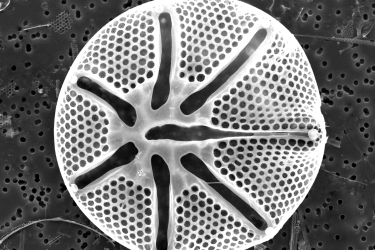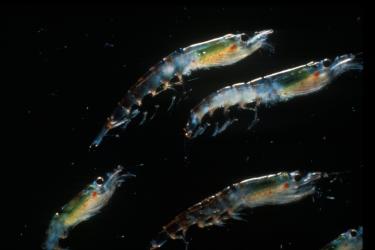The NOAA Ship Reuben Lasker will attempt to occupy 104 scheduled station locations between San Francisco and San Diego, California. Researchers will be using a variety of survey methods, including surface trawls, plankton tows, acoustic data, CUFES (continuous underway fish egg sampler), and CTD data to gather information for the sardine stock assessment to evaluate the current health of the California Current Ecosystem.
January 25, 2017
January 20, 2017
Further evidence of warmer than average temperatures has persisted in the third week of the 2017 Winter California Cooperative Oceanic Fisheries Investigations survey. Preliminary CTD data from the Scripps Institution of Oceanography shows slightly warmer temperatures than typical for this time of year. These temperatures seem to have slightly affected some marine life, as bongo nets have picked up some pelagic red crabs (Pleuroncodes planipes) inshore. Moreover, CUFES (continuous underway fish egg sampler) collected a number of northern anchovy (Engraulis mordax) eggs inshore of the Channel Islands, otherwise uncommon as the peak of spawning off the coast of California usually occurs in February.
The crew completed the core 75 stations of the Winter California Cooperative Oceanic Fisheries Investigations pattern by Thursday, January 19, before a series of storms along the coast required them to seek shelter south in San Diego Bay. The remaining survey path will be determined by how soon they are able to return to sea.
January 13, 2017
The second week of the Winter California Cooperative Oceanic Fisheries Investigations survey was smooth sailing as the crew of the NOAA Ship Reuben Lasker continued north towards San Francisco. Researchers from the NOAA Fisheries Resources Division and Scripps Institution of Oceanography found slightly elevated sea surface temperatures along the Southern California bight, with temperatures outside of the California Current reaching as high as 18°C.
Several species have been prominent along the cruise so far. Pelagic red crabs (Pleuroncodes planipes) were found on the southern-most lines of the survey and decent numbers of anchovy (Engraulis mordax) eggs and adults found in the coastal regions.
January 5, 2017
Researchers from the Fisheries Resources Division at the Southwest Fisheries Science Center and the Scripps Institution of Oceanography departed San Diego on the NOAA Ship Reuben Lasker on Thursday, January 5, to begin the 2017 Winter California Cooperative Oceanic Fisheries Investigations cruise. The survey will attempt to occupy 104 stations from San Diego to San Francisco, California, and gather information on current oceanographic conditions and coastal pelagic species (hake, anchovy, mackerel, and Pacific sardine). Methods of investigations will include surface trawls, plankton tows, acoustic data, continuous underway fish egg sampler, and conductivity, temperature, and depth data.


